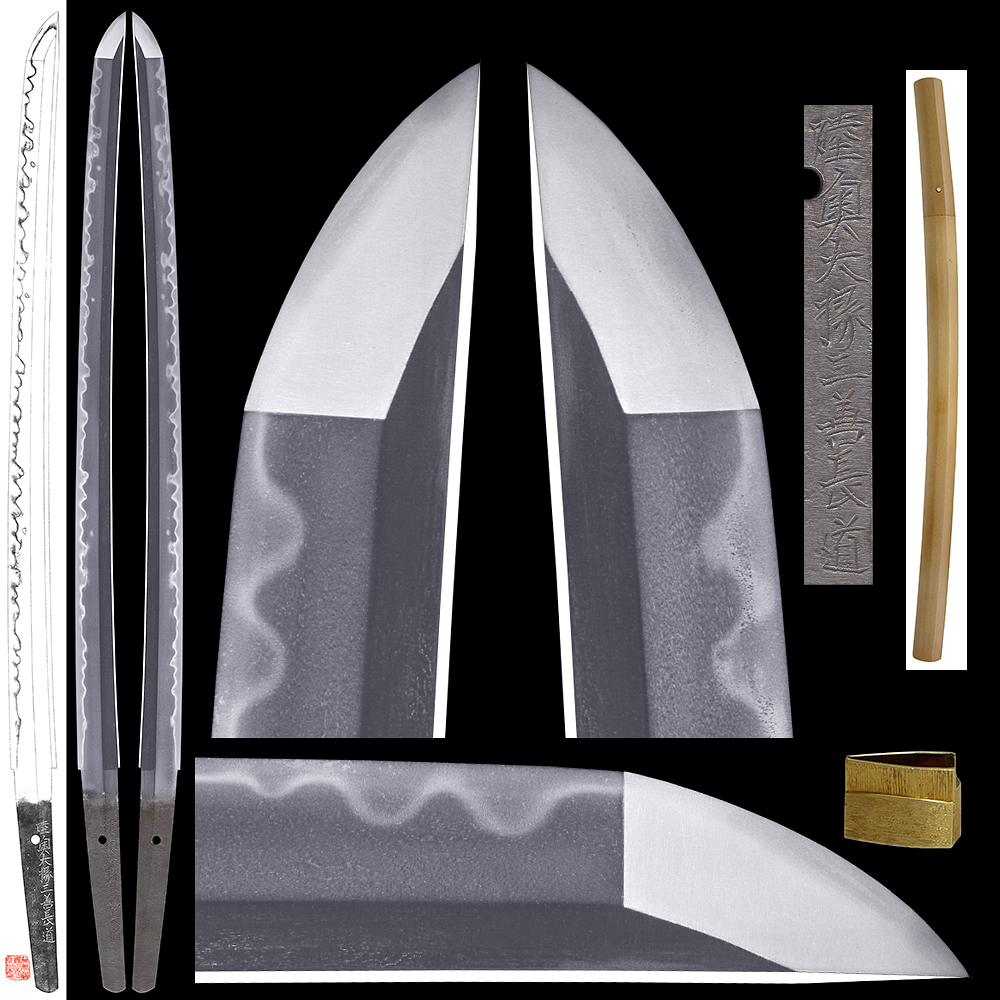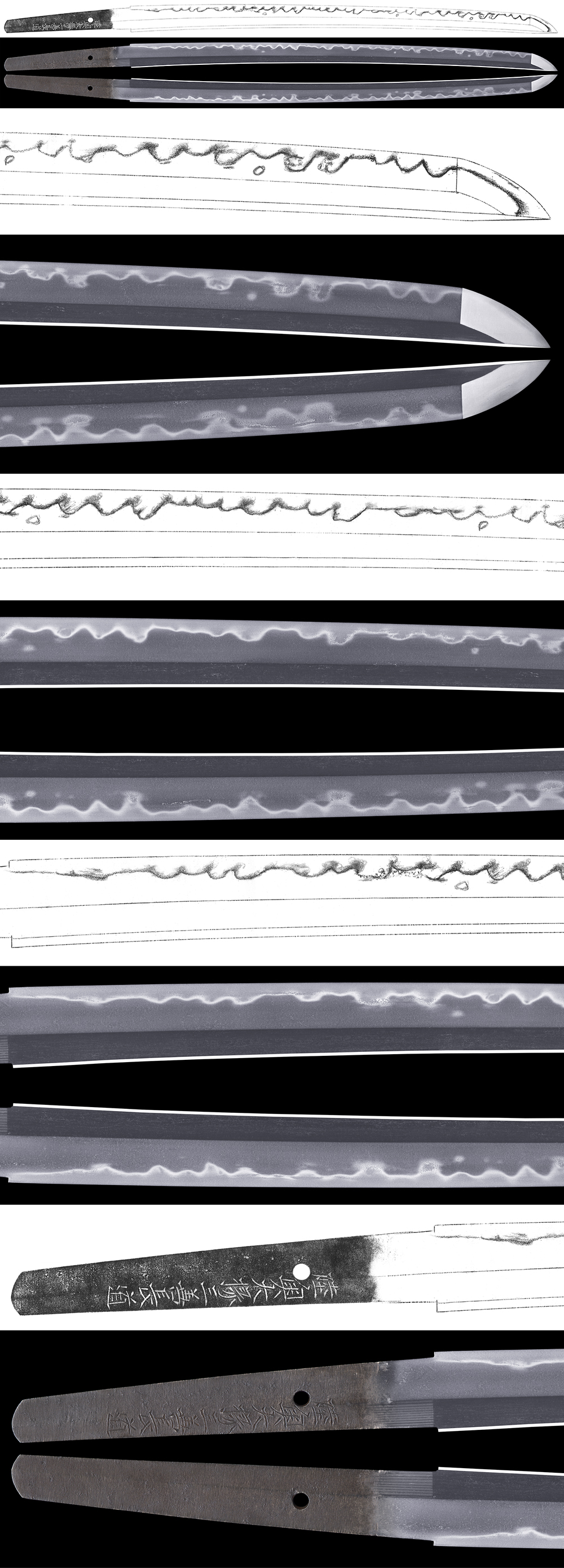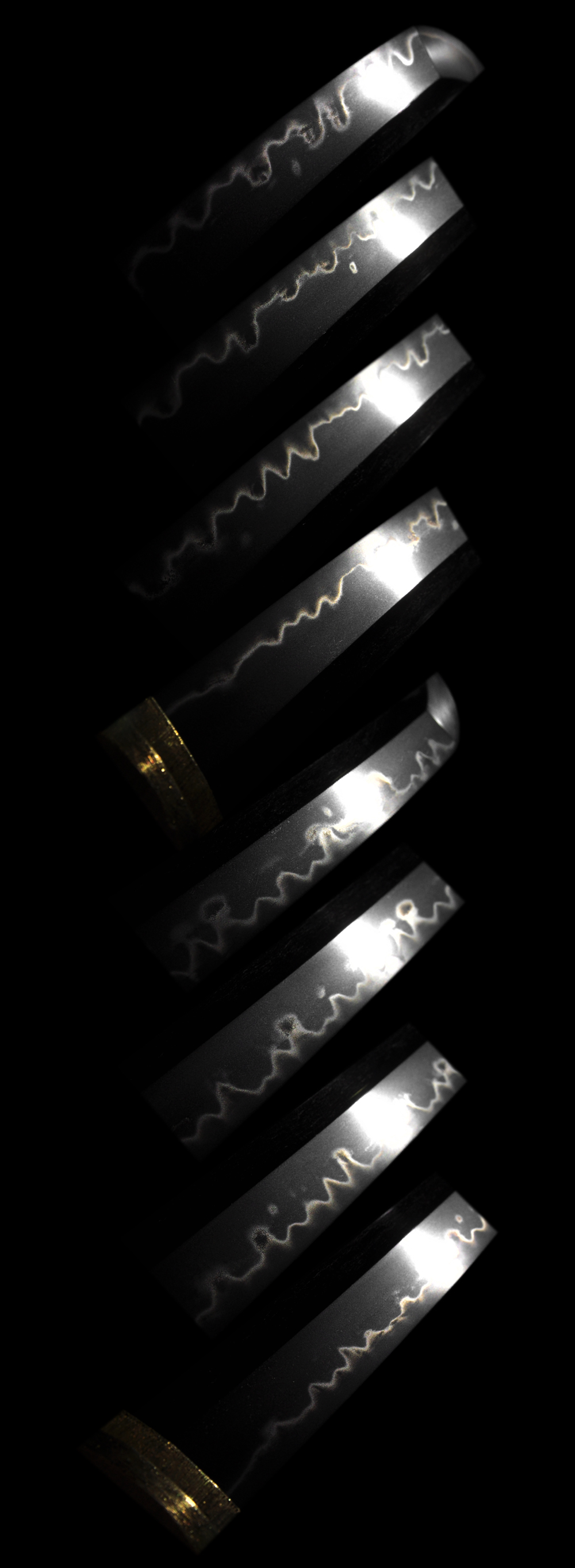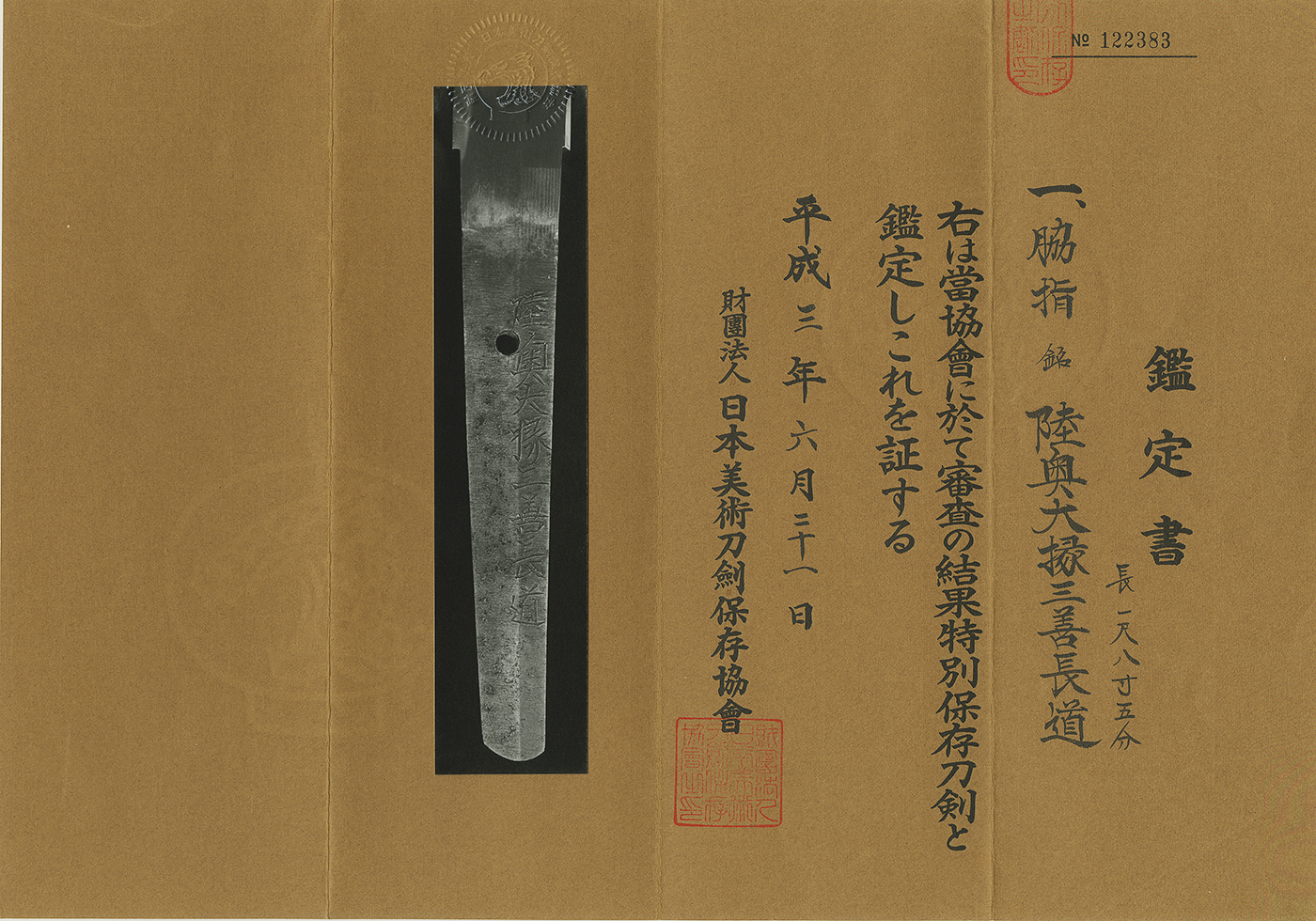Wakizashi : Mutsu Daijyo Miyoshi Nagamichi
2017/01/24
Wakizashi in Shirasaya (NBTHK Tokubetsu Hozon Paper)
Signature : Mutsu Daijyo Miyoshi Nagamichi
(We divide 4 sections for each sword as Saijyo saku, Jyojyo saku Jyo saku and regular saku)
This Miyoshi Nagamichi belongs to Jyojyo saku ranking.
The blade was polished.
Blade length : 56.06 cm or 22.07 inches.
Sori : 0.76 cm or 0.29 inches.
Mekugi : 1
Width at the hamachi : 3.07 cm or 1.20 inches.
Width at the Kissaki : 2.15 cm or 0.84 inches.
Kasane : 0.62 cm or 0.24 inches.
Era : Edo period.
Shape : It is wide and thick strong wakizashi.
The Sori curvature is shallow. It is typical Kanbun Shinto sword shape wakizashi.
Jitetsu : Itame hada well grained with JInie attached. It is clear jihada.
Hamon : Nie Deki suguha from the hamachi. The blade becomes gunome midare and boshi hakikake style.
Special feature : Miyoshi Nagamichi, born Miyoshi Toshiro lived at Matsuyama in Iyo province is a grond son of Nagakuni.
Nagakuni was a retained swordsmith of Kato Yoshiaki.
Nagakuni and his son Masanaga, the father of Nagamichi went along with the Kato family
when they moved to Aizu in O-shu province in 1627.
Nagamichi was born in 1633 who was called Michinaga in his youth.
Accepting Mutsu-Daijo in 1659, he changed the name to Nagamichi.
Mr. Asaemon Yamada, known as a famous cutting tester ranked Nagamitsu Saijo-Owaza-mono
in his book as one of twelve excellent swordsmiths at the point of sharpness.
Quite a few swords forged by Nagamichi survive with the result of cutting test.
Nagamichi the First passed away in 1685, aged 53.
The workmanship of this katana shows a strong resemblance to Kotetsu who is a representative swordsmith of Edo-shinto.
NBTHK Tokubetsu Hozon Paper
Aoi Art estimation paper : whole Oshigata.




